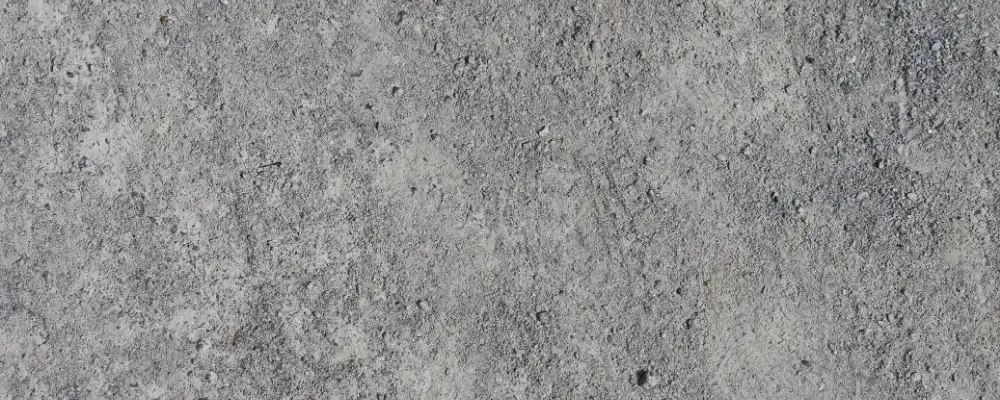Plastic shrinkage occurs when the combination of water loss and air loss, along with the concrete drying, causes a rapid loss of volume in newly placed concrete.
The knowledge of plastic shrinkage is of utmost importance to engineers, as it helps them determine surface cracking in its initial phase, which has the potential to deteriorate the structure and reduce its durability if the problems are not promptly addressed through appropriate treatment.
What is Plastic shrinkage?
Plastic shrinkage refers to the reduction in volume that fresh concrete undergoes while it is still in its plastic (unhardened) state, typically within the first few hours after placement. This happens before the concrete sets. It occurs mainly due to rapid moisture loss from the surface, especially in hot, dry, or windy conditions. When the evaporation rate is faster than the bleeding rate (the rate at which water rises to the surface), the top layer of concrete dries out quickly. This causes tensile stresses at the surface, which the plastic concrete cannot resist, resulting in fine surface cracks known as plastic shrinkage cracks. These structural cracks are usually shallow but can affect the durability and appearance of the finished concrete if not properly managed.
Causes of Plastic Shrinkage

Major contributors are as follows,
- High Evaporation Rate: The water goes off faster than it is replaced by bleeding, and surface drying happens, causing the appearance of cracks.
- Drying from the Top Surface: After the casting operation, the hydration process takes place, and water coming out of the concrete mix through bleeding evaporates away, especially under conditions of heat or wind.
- Drying from the Base: This is when the water is sucked in by the subgrade or formwork, leading to the surface of the structure drying up.
- Environmental Factors: High wind velocity, elevated ambient or concrete temperature, and low relative humidity
- Delayed Setting Time: The usage of retarders or the occurrence of cold weather may lead to a longer plastic state for concrete, thus making it highly susceptible.
The process of shrinkage, which negatively impacts dimensional accuracy, surface quality, and increases production and repair costs, occurs in all applications of construction.
How to Control Plastic Shrinkage Cracking?
Effective control of plastic shrinkage cracking involves several strategies,
1. Install Wind Barriers: Temporary wind breaks can reduce wind speed over the concrete surface, slowing moisture evaporation.
2. Provide Shade: Sunshades or coverings over concrete slabs can help maintain a stable surface temperature, preventing rapid drying.
3. Timing of Placement: Avoid pouring concrete during the hottest part of the day. Opt for early morning or evening placements for better temperature control.
4. Use Misting Systems: In hot conditions, fog sprays can help reduce evaporation by adding moisture to the surrounding air.
5. Dampen the Subgrade: Moistening the subgrade helps prevent it from absorbing moisture from the concrete, but care must be taken not to over-wet it.
6. Evaporation Retarders: Applying these products creates a film on the surface, slowing evaporation and giving time for the bleed water to rise.
7. Immediate Curing: Start curing immediately after placement with curing compounds or wet burlap.
8. Accelerators: Chemical admixtures can help accelerate the setting time of concrete, reducing temperature differences.
9. Add Polypropylene Fibers: These fibers strengthen the mix and resist shrinkage cracking.
10. Be Prepared: Have all necessary manpower and equipment in place for timely and efficient placement.
These steps help control evaporation rates and temperature, minimizing the risk of plastic shrinkage cracks in fresh concrete.
Effects of Plastic Shrinkage on Concrete Structures
Effective control of plastic shrinkage begins with expert planning and execution, something Brick & Bolt delivers with precision.
- Surface Cracking
Shallow, irregular cracks of various lengths appear on surfaces, mainly on the horizontal ones like slabs and pavements.
- Reduced Durability
Through which water, chlorides, and chemicals can pass, these cracks are the channel for the entrance of water, chlorides, and chemicals; thus, the corrosion of steel within the concrete is accelerated.
- Compromised Structural Integrity
Although plastic shrinkage cracks are usually superficial, they can weaken the concrete cover and may reduce structural reliability over time—especially if they allow water ingress, leading to corrosion or freeze-thaw damage. This, in turn, can affect how loads are distributed or resisted.
- Aesthetic Degradation
Concrete, although foundational, often develops visible cracks that, though not always structural, significantly reduce the visual appeal of the construction. These imperfections can detract from the overall quality and aesthetic of the building.
- Coating and Finish Failures
Cracks in a drying or curing surface can lead the way to a partial or complete separation of in-situ or precast topping layers and coatings, or even waterproof membranes.
- Maintenance Challenges
Repairing cracks caused by plastic shrinkage can be very time-consuming and expensive, especially in water-retaining or industrial-grade structures.
- Leakage Risk
In tanks, reservoirs, and floors that are exposed to shrinkage cracks, the cracks may allow seepage, and this could, in turn, lead to water or material leakage, and the situation
Identifying Plastic Shrinkage Cracks
Plastic shrinkage cracks become visible in the initial period after the concrete pouring, which is usually in the first 2 to 6 hours after placement, when the material is still in its plastic state.
These cracks are due to the rapid evaporation of surface water that exceeds the water bleeding rate, which causes tension in the fresh concrete that it cannot withstand.
- Place
Mostly be seen on the open or top faces (horizontal), examples are slabs, pavements, and big floor panels.
- Direction
The cracks are generally irregular and random in direction. They often appear roughly parallel or intersecting, spaced at 300 mm to 2 m apart, depending on drying conditions and mix.
- Start and End
In normal cases, they are shallow (3-10 mm deep), quite narrow (less than 0.5 mm), and they are not vertical through the thick layer of the slab.
- Time
Not only do they appear, but they are also still visible until the final set comes, mainly exposed or in warm, windy, or low-humidity weather.
- Material Performance
Commonly in a mix with low bleed or when retarders prolong the setting time of the concrete.
A timely and proper application of the curing system will hinder their propagation, and long-run durability problems will not arise.
Preventive Measures of Plastic Shrinkage
The primary objective is to minimize rapid moisture loss from the surface before initial setting.
- Control Evaporation: Use fog sprays, windbreaks, and sunshades to reduce evaporation caused by wind, temperature, and direct sunlight.
- Start Early Curing: Apply water curing, curing compounds, or moisture-retaining covers like polyethylene sheets immediately after finishing.
- Modify Mix Design: Use admixtures to accelerate setting time, especially in hot weather.
- Chilled Mixing Water: In high-temperature environments, replace part of the mixing water with crushed ice or chilled water to reduce concrete temperature.
- Use of Fibers: Incorporate synthetic or steel fibers to control micro-cracking.
- Proper Subgrade Preparation: Moisten the subgrade to prevent it from absorbing water from the concrete.
Implementing these measures significantly reduces the risk of surface cracking and enhances the long-term durability of concrete elements.
Repair Methods for Plastic Shrinkage Cracks
To prevent further damage and restore the concrete, various repair methods can be employed based on the crack’s size, depth, and stage.
1. Cement Grout or Low-Viscosity Polymer Injection: For hardened cracks, cement grout can be brushed into smaller cracks to seal them. For deeper or wider cracks, low-viscosity polymers offer better penetration and a more durable repair by bonding the crack and restoring the surface’s integrity.
2. Epoxy Crack Injection: Narrow cracks (less than 1/4 inch) can be repaired by drilling small holes along the crack and injecting epoxy resin. Once the resin hardens, it restores the strength and stability of the concrete.
3. Patching Compounds: For wider cracks, patching compounds are applied to fill the void. These compounds are blended to match the surrounding concrete, ensuring a seamless repair.
These methods, when applied promptly, ensure that the concrete remains structurally sound and visually appealing.
Conclusion
Plastic shrinkage typically occurs within the first few hours after concrete placement, primarily due to the rapid evaporation of surface moisture. This early-stage cracking can be effectively minimized through proper environmental controls, timely curing, and adherence to best construction practices. Partnering with a reliable platform like Brick & Bolt ensures that every stage of construction, from foundation to finishing, is executed with expert oversight and proven techniques, helping to prevent defects like plastic shrinkage and ensuring long-term durability.

